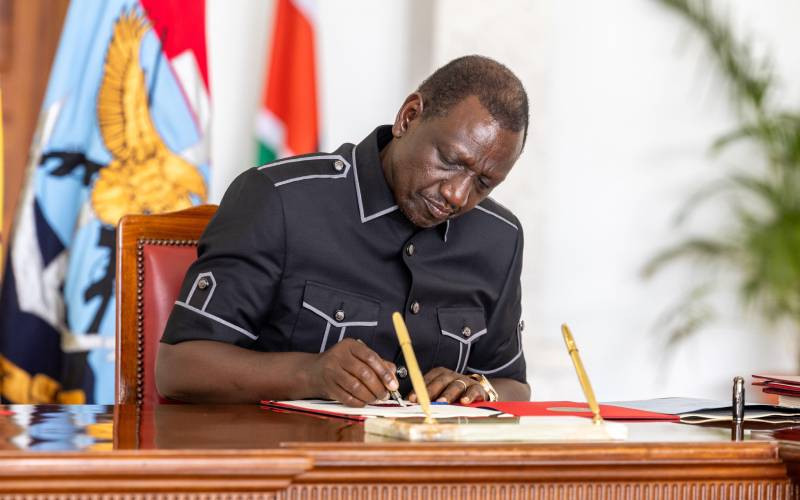Kenya: Kenya’s economy is expected to perform below expectations this year owing to insecurity in parts of the country. Also feeding into this sluggish growth narrative are low prices for tea and coffee in the international markets for most parts of this year.
This is according to the Budget Review and Outlook Paper (BROP), 2014. It is the second such document prepared in accordance with the Public Finance Management (PFM) Act, 2012 under the Jubilee Administration.
Tourism, which is one of the country’s main foreign exchange earners, has been the worst hit as visitors stay away from the coastal beach hotels and resorts. The economy is projected to expand by between 5 and 5.5 per cent this year from an earlier forecast of 5.8 per cent as stated in the Budget Policy Statement (BPS) 2014, released earlier this year.
Kenya’s Gross Domestic Product (GDP) growth remained sluggish and is estimated to have expanded by 5.8 per cent in the second quarter of this year compared to 7.2 per cent recorded during a similar quarter of 2013.
This year’s growth projections are below the new rebased GDP figures which indicate that the economy grew by 5.7 per cent in 2013 from an earlier figure of 4.7 per cent. But even with gloomy prospects this year, Kenya’s economy is projected to recover to a GDP growth of 6.3 per cent in 2015, 6.4 per cent in 2016 and 6.9 per cent in 2018.
Capital spending
Treasury underpins the economic growth outlook on continued good performance across all sectors of the economy. The projected growth assumes normal weather pattern in 2015 and the medium term.The document signed by Treasury Cabinet Secretary Henry Rotich says inflation is expected to be maintained at a single digit level and near the 5 per cent target, reflecting implementation of a prudent monetary policy and easing of both food and oil prices, and stability of the shilling’s exchange rate to the major international currencies.
Treasury mentions, in the BROP 2014, that so far the implementation of the 2014/15 budget is progressing well despite initial challenges encountered at the start of the financial year.
Preliminary out-turn indicates that the total expenditure by September 2014 was Sh237.1 billion compared to a target of Sh380.4 billion. The bulk of this underperformance has been in capital spending on both domestically and foreign-financed expenditures.
Lying idle
Rotich expects higher absorption rate in the coming months as spending on capital projects gets underway. Over the medium-term, growth will pick up gradually as global conditions improve and macroeconomic stability is sustained. The growth estimates for the medium term, in terms of fiscal years, are therefore 5.8 per cent in 2014/15, 6.3 per cent in 2015/16 and 6.7 per cent in 2017/18.
“Adequate measures have been taken to ensure priority programmes are fully implemented. These include directing ministries, departments and agencies to prepare and submit their annual work plans, cash flow plans, and procurement plans to Treasury in line with the Public Finance Management(PFM) Act ,” Treasury said.
Also, the implementation of priority programmes will be tracked and feedback given periodically. The National Treasury is also in the process of establishing the ‘Treasury Single Account’, from which all payments shall be processed in compliance with the Public Finance Management Act, 2012.
Previously, all State organs managed a fragmented banking arrangement which resulted in government-owned financial resources lying idle for extended periods in bank accounts held by some spending units while the National Treasury continued to borrow.
Stay informed. Subscribe to our newsletter
 The Standard Group Plc is a
multi-media organization with investments in media platforms spanning newspaper
print operations, television, radio broadcasting, digital and online services. The
Standard Group is recognized as a leading multi-media house in Kenya with a key
influence in matters of national and international interest.
The Standard Group Plc is a
multi-media organization with investments in media platforms spanning newspaper
print operations, television, radio broadcasting, digital and online services. The
Standard Group is recognized as a leading multi-media house in Kenya with a key
influence in matters of national and international interest.
 The Standard Group Plc is a
multi-media organization with investments in media platforms spanning newspaper
print operations, television, radio broadcasting, digital and online services. The
Standard Group is recognized as a leading multi-media house in Kenya with a key
influence in matters of national and international interest.
The Standard Group Plc is a
multi-media organization with investments in media platforms spanning newspaper
print operations, television, radio broadcasting, digital and online services. The
Standard Group is recognized as a leading multi-media house in Kenya with a key
influence in matters of national and international interest.







